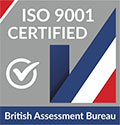Keeping your workers safe on-site has always been a challenge, and with the spread of COVID-19, workers now face a new threat. New information is circulating quickly, and progress continues in treating the virus, but there are still uncertainties and questions that safety managers must keep top of mind.Â
To help safety managers better understand how to keep workers safe during the COVID-19 pandemic, Remote Medical International (RMI) researched the recent developments from the Centers for Disease Control and Prevention (CDC) and the World Health Organization (WHO).
We also consulted our medical staff to understand the right precautions and types of testing that can help during these uncertain times.
Precautions for COVID-19 On-site
Taking precautions not only protects your workers on-site but also prevents the spread of COVID-19 to at-risk individuals, according to our Senior Medical Director, Dr. Richard Misiaszek. Since COVID-19 is an airborne illness that can spread by coughing or sneezing infected droplets, masks are essential to help prevent the spread of the virus.Â
The CDC recommends people wear masks in all situations, use gloves as personal protective equipment (PPE), cover a cough, and wash their hands for at least 20 seconds.Â
According to Misiaszek, workers should also avoid touching their face and mouth and practice social distancing measures when off the project. The recommended social distancing by the WHO is six feet, or two meters. Social distancing is essential to limit exposure to the virus and will prevent it from spreading.
If workers are sick, they should not report to work, according to Misiaszek. Workers should contact a health provider to discuss their symptoms and figure out the next steps in managing the virus.
Screening for COVID-19 On-site
Testing and screening options have continued to evolve for COVID-19 since the pandemic began. In the medical industry, we often use “screening†to denote preventative testing, which helps prevent the spread of the disease by identifying COVID-19 cases early.Â
In contrast, testing confirms a current or past diagnosis of COVID-19. Based on whether a patient requires screening or testing, different tests are used to diagnose the infection.Â
As of right now, there are limited testing options available to those with severe illness requiring hospitalization, but it is critical to know what types of screening and testing are available to your workers. If a worker is showing symptoms, they can also get tested at a drive-through location or hospital, according to Misiaszek.Â
The first type of test is the qualitative antibody rapid diagnostic test (RDT). According to the CDC, antibody tests are imperative for detecting COVID-19, even if there are no symptoms. The test can find antibodies in tissues or blood after infection.Â
There are multiple types of RDTs available. For example, one type finds an immune response before symptoms occur and another that detects immunity after symptoms have passed.
“The antibodies detected by this test indicate that a person had an immune response to SARS-CoV-2, whether symptoms developed from infection or the infection was asymptomatic,” according to the CDC.Â
The second type of test is the RT-PCR test. This test identifies if there is a bit of viral genetic material in the specimen taken from a patient. While this test is very accurate and can detect illness early, it takes longer to process and getting samples is a higher risk to medical providers.Â
According to the FDA, “testing with the COVID-19 RT-PCR test is intended for use by trained clinical laboratory personnel specifically instructed and trained in the techniques of real-time PCR.â€Â
Using the right tests and screening methods is critical to keeping workers healthy and safe on a project. Our providers can identify the symptoms of COVID-19 and help workers prevent the spread on-site.
To learn more about how RMI can develop a custom COVID-19 screening solution to keep your workers healthy, contact us today.


